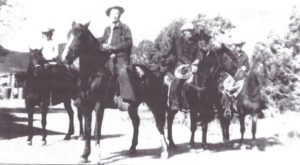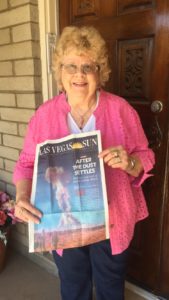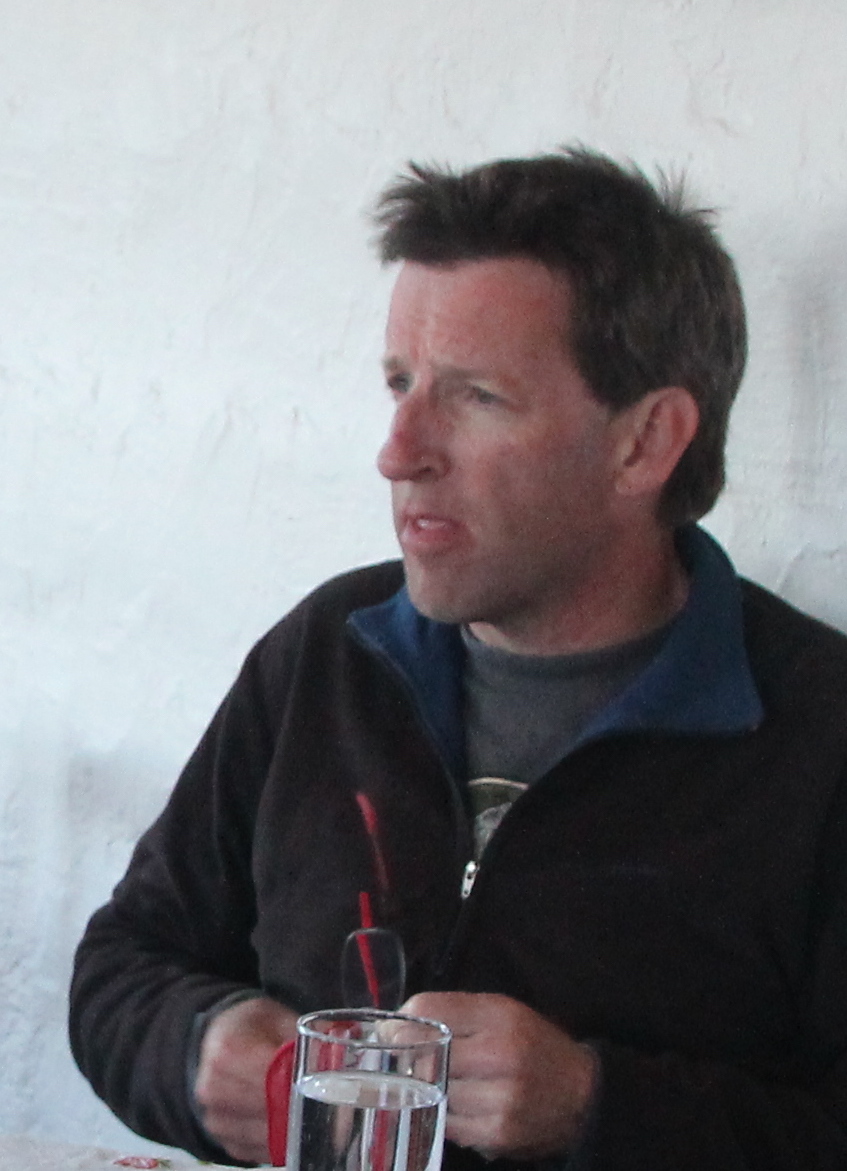Danielle Stephens can vividly recall the bomb’s early light, the brilliant early-morning flash seen on horseback from ranch country up in the Aquarius Mountains. Everyone knew it was coming. The bomb tests were always announced in advance and planned for days when the wind was blowing eastrather than west toward populous California. Sometimes the tests came on school days and in that case the teachers ushered the kids out to watch the incandescent pink flash in the sky. But on this day, she and her dad, uncle and brother were out early, in the saddle, and here came the plume toward them, too big, too fast.
“Get off of this mountain quick!” said her father. “This is dangerous stuff! This is going to hurt you!”
But it was too late. The fallout engulfed them, a pinkish-brown dust with an oily tinge that stuck to the clothes and the horses.
Scarcely anyone in northwest Arizona was against the idea of the bombs being tested. They were a sort of guarantee that what had happened at Pearl Harbor couldn’t happen again with even bigger stakes. The engineering was grand, the staging of the tests an art in itself, the mushroom clouds awe-inspiring. They called the blasts “tickling the dragon’s tale.” But now, in 1952, the bomb makers and the military brass were getting too wild with their new toys, and this ranching family and a lot of other people in western Arizona were in it but good, tied up more closely than anyone wanted in this new arms race that was discoloring what had at first seemed a glorious American-led peace.
The father and uncle are gone now, died of cancer long years ago, as Stephens’ own daughter did too at a much-too-young age, but she keeps on, a relentless advocate for the rights of those who saw the tests and are persuaded that it’s because of the tests there has been such a surge of cancer among her friends and relations.
Today, Stephens spends most of her time on a remote ranch along the Big Sandy River. Her son-in-law does the ranching, while she regularly visits family and friends in Kingman. She compiles information about the many bomb tests, which took place from 1951 through 1962, and about cancer rates in Kingman. Geographically, you might say she’s been cursed. In 1990 the federal government passed a law, the Radiation Exposure Compensation Act (RECA), that created a framework for providing compensation to those who had been exposed to radiation as a result of the government’s rush to mine uranium and build and test nuclear weapons during the Cold War. The law provided a means to get compensation for former uranium miners, mill workers, those who had worked at the nuclear test site in the Nevada desert, and residents of counties, in states near the test site that had been affected by fallout. Residents who lived in Flagstaff, Prescott or other northern Arizona communities during the 1950s and have contracted certain cancers, for example, can get up to $50,000 in compensation.
But not all northern Arizona communities. For reasons that have always remained obscure, the act didn’t mention Mohave County, where Kingman is, and Stephens’ childhood ranch, and much of the Arizona terrain that is in fact closest to the test site. Even when the act was amended in 2000 the revisions included only the part of Mohave County north of the Colorado River—where very few Arizonans live—and still excluded Kingman and surroundings.
And so for many years now Stephens and a dwindling, aging band of allies have been wrangling legislators and trying to get RECA revised once again to include Kingman. She’s corralled John McCain and Paul Gosar, Janet Napolitano and Jan Brewer. With Harry Reid and Barack Obama she got nowhere. When I talked to her earlier this year she was holding out hope for Donald Trump.
“Timing is everything,” she said. “So when things calm down in a little bit, and he gets a little more of his things accomplished, then I’ll write him.”
But political support or no, revising RECA to include the southern half of Mohave County hasn’t yet gone anywhere. Her lists of those who got cancer haven’t made a difference yet: not only her father and uncle and daughter, but her husband and brother too, her childhood friend Eddie Pattillo and his sister, and quite a few other ranchers and those who did the testing of Fords out at the Yucca Proving Grounds—people who worked outside, in general. Her ranching friend Eleanor Fanire who helped jump-start the Mohave County Downwinders advocacy group but ended up dying of pancreatic cancer, and many others in Eleanor’s family ended up sick because they lived where the stiff winds would blow fallout in across Red Lake, the wide-open playa north of Kingman.
It would be nice, Stephens thinks, to have all of those folks who are still alive but suffering from various cancers eligible for the $50,000 they’d be eligible for had they lived in other counties in northern Arizona, but to her the federal government’s apology to the residents of Kingman and surrounding areas would be of inordinate value too.
“I would have a huge place rented,” she said, “and have all the people that were affected there, and give them papers, to fill them out while you’re there, and that’d be satisfaction for me—is have all the people, or their families, there, coming to get these papers, and make those papers out and send them to the government. That would be a great goal for me, because I don’t like to see people being cheated, and I don’t like the government to do it. And what would I do? Just be very glad to do it, and I’d go on with some of my hobbies, instead of putting all my time into Downwinders.”



